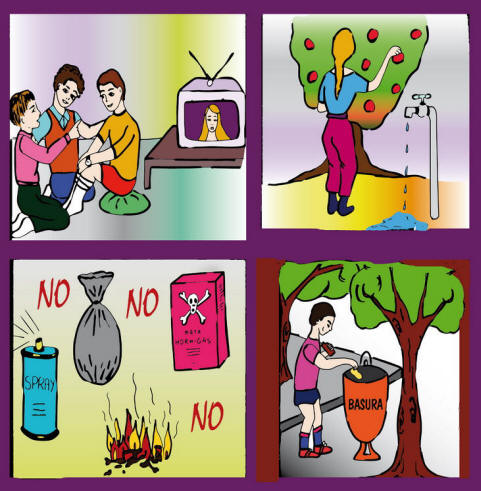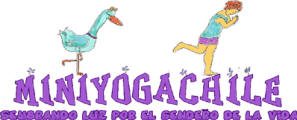Your cart is currently empty!
Maria Magdalena’s MiniYoga for Children – Part 5
 |
Maria Magdalena Bernales
|
||||
|
Hello everybody, Happy September! A very warm greeting to all of you, hoping that everything is ok, in peace and harmony. |
|||||
|
ECOLOGY |
|||||
|
|||||
|
How can we take care of it? 3. Aerosol sprays. They damage the ozone layer. The ozone layer is a gas layer that covers and protects the Earth from UV light which are very harmful for people, plants and animals. To help prevent this, first of all, we have to avoid, at all cost, spray-on products; all of them can be replaced. And secondly, avoid direct sunlight exposure between 11 AM and 4 PM. Always wear hats or caps and good sunglasses. 4. Plastic bags or plastic in general. Plastic is not biodegradable, that means, it doesn’t turn back into earth; it will remain for 500 years right where we left it, it does not dissolve. We have to avoid the use of plastic and reuse the one we already have. 5. Insecticides or pesticides. The problem with these products, besides from being dangerous to children, is that they are poisonous, they pollute the soil where they are applied. Every certain time, the manufacturers have to invent a new and stronger kind, because bugs get used to them. Furthermore, we break the ecological balance by killing certain kinds of bugs and allowing others to thrive. Let’s try to avoid the use of chemicals and search for natural alternatives, there are many! 6. We have to put the garbage where it belongs. If we all dispose of it on the street, there would come a time where all would be full of garbage and everywhere. Besides from being very ugly and smelly, it is dangerous for our health because of the filth and microbes. If I eat a chocolate bar on the street and I can’t find a trash can nearby, what can I do with the wrapping paper? I put it in my pocket until I find one or I arrive at home. One thing is to “not contaminate” and the other is to “de-contaminate” (clean-up what is dirty). |
|||
|
|||
|
Based on ‘Yoga & |
|||


Leave a Reply